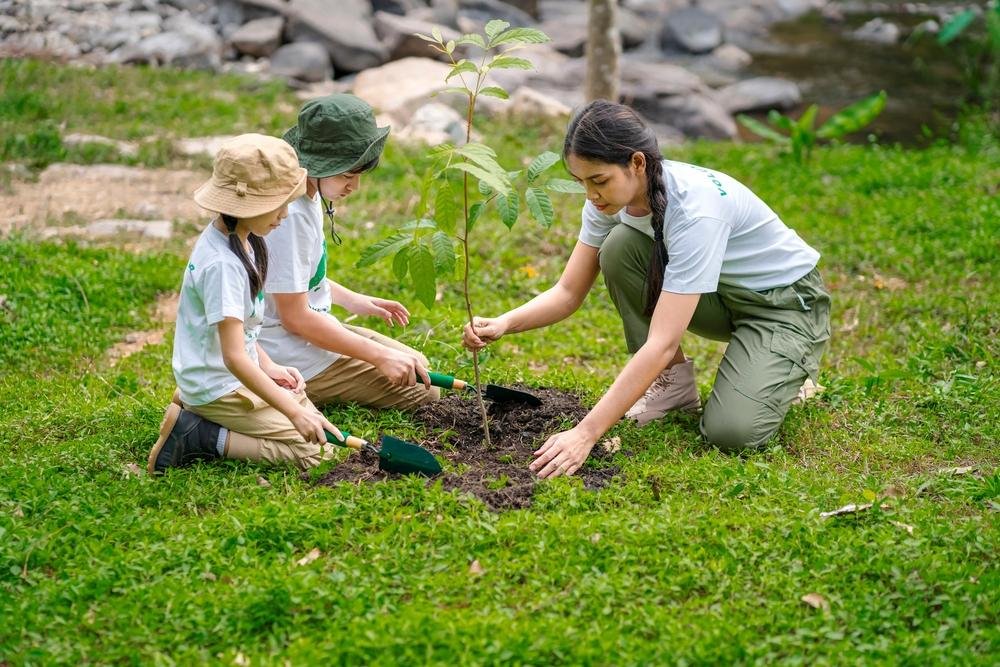Restore & Revive Your Outdoors: Landscaping in Sacramento, CA

Sacramento, California, a city pulsating with history and known for its rich, diverse landscape, is a haven for outdoor enthusiasts. However, maintaining a harmonious relationship between a thriving urban environment and Sacramento’s natural expanse is a continuous challenge. As a homeowner or a commercial property manager looking to enhance the serenity and allure of your dwelling, addressing landscaping is not just about external appeal—it’s about conservation and sustainability.
In a region renowned for routinely warm temperatures and a semi-arid climate, here’s how revamping your outdoor space can contribute to the tapestry of Sacramento’s ecological fabric while sprucing up your curb appeal.
The Arboreal Arsenal: Native and Drought-Tolerant Flora
When it comes to flora selection, it’s imperative to choose plants that are not only visually stunning but are also native to the area and can withstand Sacramento’s distinct climate without excessive water. Sourcing indigenous perennials, grasses, and shrubs isn’t merely an aesthetic choice; it’s a strategic move towards biodiversity and resilience within your micro-ecosystem.
The Sacramento Superstars
Some native botanical gems that thrive in Sacramento’s habitat include:
- California Buckeye (Aesculus californica): Renowned for its striking white flowers, this hardy tree is a quintessential feature of the Sacramentan landscape.
- Western Redbud (Cercis occidentalis): With its captivating magenta blossoms, the redbud adds a splash of color in the spring, perfectly complementing Sacramento’s sunny weather.
- Yarrow (Achillea millefolium): An easy-to-care-for perennial, yarrow’s fern-like foliage and clusters of flowers attract pollinators while requiring little water.
Drought-Evasives and Conserve-Oases
Incorporating water-wise options like:
- Manzanita (Arctostaphylos sp.): These species offer an array of shapes, sizes, and textures and require minimal resources to flourish.
- Sage (Salvia): With almost 900 species, Salvia offers colors from red to purple and attracts hummingbirds and butterflies while staying hydrated with an occasional light watering.
- California Fuchsia (Epilobium canum): Not an actual fuchsia, but related, this perennial delights with its red and orange tubular flowers, proving a natural ventilation for your sanctuary.
The Soil Solution: Enhancing Fertility and Health
Sacramento’s generally clay-heavy soil presents a unique challenge. Yet, with the right amendments and practices, you can transform infertile patches into thriving garden grounds.
Crafting Compost: The Black Gold
Composting is the backbone of sustainable landscaping. It enriches the soil, reduces waste, and foes hand-in-hand with water conservation.
- Balanced Kitchen Waste: Keep a bin for fruit and vegetable scraps, coffee grounds, and eggshells. These provide essential nutrients and structure to the compost.
- Brown Matter: Carbon-rich materials, such as dried leaves and cut grass, are crucial for maintaining the right balance in your compost.
- Aerating and Turning: Ensure aeration and facilitate the breakdown process by mixing your compost pile regularly.
Soil Amendment Artistry
- Gypsum: Helps break up heavy clay soils, allowing for better drainage and root penetration.
- Organic Matter: Regularly incorporate organic mulch and compost into your soil to improve structure and moisture retention.
- Microbial Minestrone: Introduce beneficial mycorrhizal fungi and other soil organisms to establish a rich, interactive habitat for your plants.
Balanced Soil Basics
To harmonize with nature:
- Test Your Soil: Understand its pH and nutritional profile to effectively cater to your plants’ needs.
- Mulch Mindfully: Apply organic mulches to minimize evaporation and erosion, keeping your soil cooler and moister in the summer months.
- No-till Techniques: Reduced tilling preserves soil structure and organic matter, promoting healthier ecosystems below ground.
Ecological Hardscape: Materials and Methodologies
Hardscaping, the art of incorporating non-living elements into your landscape, serves functional and aesthetic purposes, from paths and patios to retaining walls and water features.
Sustainable Surface Selection
Choosing the right materials can significantly impact your outdoor footprint:
- Porous Pavement: Materials like gravel, decomposed granite, or permeable pavers allow rainwater to infiltrate the soil, replenishing groundwater.
- Recycled Rock and Flagstone: Reduce environmental impact by selecting reclaimed materials for your pathways and patios.
- Stamped Concrete: Offers the durability and design flexibility of concrete with a reduced need for maintenance, contributing to an eco-friendly outdoor presence.
Water Wisdom: Designing for Conservation
Water-centric features can be aesthetically striking while serving a practical purpose:
- Rain Gardens: These shallow depressions are planted with native species and designed to absorb rain, reducing runoff and erosion.
- Bioswales: Subsurface water management systems that direct and filter stormwater, aiding in the prevention of flooding and pollution of rivers and oceans.
- Ollas and Root Irrigation: Ancient irrigation methods that reduce water waste by delivering moisture directly to the plant roots.
Lighting the Natural Way
- Solar Solutions: Opt for solar-powered lights to reduce energy consumption and the cost of outdoor illumination.
- LED Luminaires: Energy-efficient and long-lasting, LED lights come in a variety of hues and designs, allowing for creative and planet-conscious lighting schemes.
- Timing is Bright: Utilize timers and motion sensors to ensure your lighting is employed when needed, reducing unnecessary usage.
Water Conservation and Irrigation Innovation
Navigating water needs in Sacramento’s climate is a balancing act. Water conservation isn’t just a buzzword; it’s an imperative for the survival of our landscapes and ecosystems.
Conservation Paradigms
Efficiently manage your water resources:
- Smart Systems: Employ weather-based controllers for your irrigation that automatically adjust watering schedules according to local weather conditions.
- Landscape Positioning: Group plants with similar water requirements together to streamline irrigation planning and minimize waste.
- High-tech Drip: Invest in advanced drip systems that deliver pinpoint accuracy in watering, virtually eliminating runoff and overspray.
Capturing the Precipitation Prize
- Rainwater Harvesting: From simply diverting gutter downspouts to more elaborate tank systems, every drop counts when you harvest rainwater for future use.
- Greywater Garnishes: Reuse household water from baths, sinks, and washing machines to sustain ornamental plants, drastically reducing your outdoor freshwater usage.
Watering Wisely
- Early Risers: Water in the morning to minimize evaporation and give plants a hydration cushion for the day’s warmth.
- Deep Roots, Deep Hydration: Promote deep root growth by infrequent but thorough waterings, ensuring your plants are resilient to Sacramento’s inhospitable dry spells.
A Kaleidoscope of Caring
Landscaping in Sacramento is more than a visual investment; it’s a pledge to the collective well-being of the community and the natural world. By implementing the practices and principles outlined in this extensive landscaping guide, you can contribute to the region’s ecological balance while crafting an outdoor scenery that is not just beautiful, but also highly functional and sustainable.
What could be more rewarding than knowing that your carefully curated space is part of a broader effort to conserve Sacramento’s unique landscape for generations to come? With each plant planted, each pitch fork turned, and each raindrop captured, you’re not just gardening—you’re restoring nature’s kaleidoscope to its vivid, perennial brilliance.
